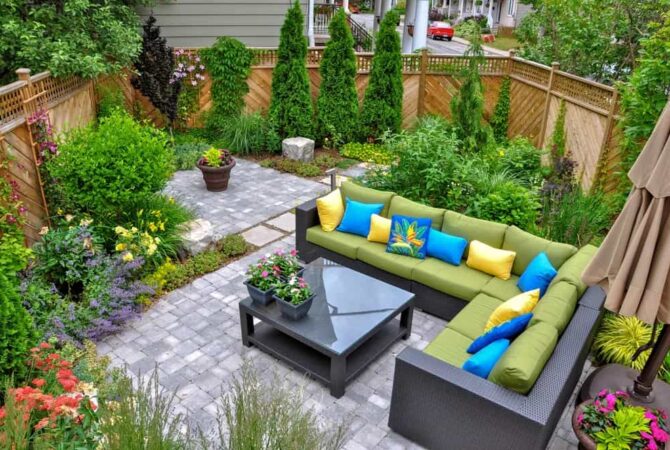Gardens make the world beautiful. They are places of peace and joy. But gardens can also help the earth. This is called sustainable garden design. It helps nature while looking lovely.
What is Sustainable Garden Design?
Sustainable garden design is about balance. It helps plants, animals, and people. This kind of garden does not waste resources. It uses water and soil wisely. It is kind to the earth.
Why Choose Sustainable Gardening?
- Good for the Earth: It protects our planet.
- Healthy Plants: Plants grow strong and healthy.
- Save Money: You use fewer resources, like water.
- Attracts Wildlife: Birds and bees love these gardens.

Credit: www.extraspace.com
How to Start a Sustainable Garden
Starting a sustainable garden is easy. You need to plan. Planning is the first step. Here are some simple tips:
Choose The Right Plants
Pick plants that fit your climate. They need less water and care. Native plants are best. They know how to live in your area. They also support local wildlife.
Use Water Wisely
Water is precious. Use it carefully. Collect rainwater in barrels. Water plants early in the morning. This helps the water go deep into the soil.
Make Your Own Compost
Compost is nature’s way of recycling. It is rich soil made from old plants. You can make compost at home. Use food scraps and leaves. Compost helps plants grow better.
Protect The Soil
Healthy soil is important. Do not dig too much. Let worms and bugs do their job. Cover soil with mulch. Mulch keeps soil moist and stops weeds.
Save Energy
Use hand tools instead of machines. They save energy and are quiet. You can also use solar lights in your garden. They are powered by the sun.
Design Ideas for a Sustainable Garden
Now, let’s talk about design. A garden should be a joy to see. Here are some ideas:
Paths And Walkways
Paths help you enjoy your garden. Use stones or gravel for paths. They let rainwater soak into the ground.
Plant In Groups
Group plants by their needs. This makes watering easier. It also creates a lush look.
Add A Pond
Ponds are great for wildlife. Frogs, dragonflies, and birds will visit. A small pond can fit in most gardens.
Grow Your Own Food
Try growing vegetables and fruits. They are fun to plant and eat. You can share them with family and friends.

Credit: www.melaniejadedesign.com
Take Care of Your Garden
Once your garden is ready, take good care of it. Regular care keeps it healthy. Here are some tips:
Watch For Pests
Some bugs are good. They help control bad bugs. You can also use natural sprays to protect plants.
Prune And Trim
Pruning helps plants grow better. Trim dead leaves and branches. This keeps your garden neat.
Check The Soil
Test your soil often. Make sure it has what plants need. Add compost if needed.
Frequently Asked Questions
What Is Sustainable Garden Design?
Sustainable garden design uses eco-friendly methods to save water, soil, and energy.
How Does Sustainable Gardening Save Water?
It uses drought-tolerant plants and collects rainwater to reduce water use.
Which Plants Are Best For Sustainable Gardens?
Native and drought-resistant plants work well because they need less water and care.
Can Sustainable Gardens Improve Soil Health?
Yes, by adding compost and using mulch, soil stays healthy and rich.
Conclusion
A sustainable garden is a gift to the earth. It is a beautiful place to relax. You can enjoy it every day. With a little care, your garden will thrive. It will be a home for plants, animals, and you.
Final Thoughts
Take small steps. Each step helps. Your garden will grow. It will be a place of joy and harmony. A place where nature and people come together.
4 min read
